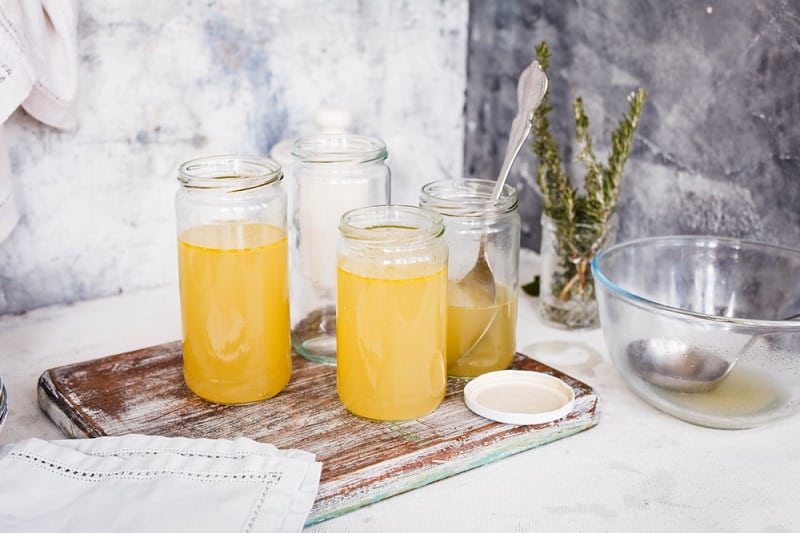
DISCLOSURE: This post may contain affiliate links, meaning when you click the links and make a purchase, I receive a commission. As an Amazon Associate I earn from qualifying purchases.
While it is so quick to grab a packet or can of chicken stock from the grocery store, you are missing out on so much flavor if you do this! If you eat a lot of soups, casseroles, or other dishes that require chicken stock, it really is worth making your own. Here’s why:
- It simply tastes better! Many store-bought stocks are bland and do not have the same depth of flavor that you can obtain with homemade stock.
- It’s cost-effective. Making and canning your own chicken stock will save you loads of money. The ingredients are simple and cheap. Stock is made mostly with things you would usually throw away.

- It’s more nutritious. Store-bought stock contains too much sodium, flavorings, colorants, and preservatives. Instead, homemade stock extracts the flavor from natural ingredients like chicken bones and skin and vegetables and herbs.
- It results in less waste in your kitchen as you will use up those chicken bones, random garlic cloves, and odd vegetables that normally would get thrown away.
- It frees up freezer space. Properly pressure canned chicken stock can be safely stored on the pantry shelf.
Canning Chicken Stock Without A Pressure Canner?
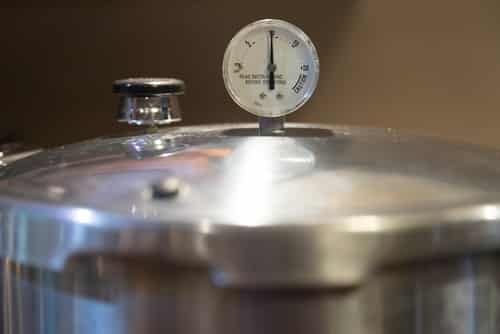
Please don’t be intimidated by the thought of making and canning your own chicken stock. It is easy, and as long as you follow a few rules, it’s safe. All you need is the leftover carcass of a roast chicken, water, and a few vegetables and herbs. This will give you about two liters of chicken stock.
[amazon box=”B083F89ZC1″]
We’ll guide you through the process here. However, before you start, we need to get one thing out of the way – if you are considering canning stock without a pressure canner, DON’T!
Canning without a pressure canner is only suitable for high-acid foods like chutneys and pickles. Canning chicken broth without a pressure canner can result in a severe case of food poisoning.
That’s why this article will walk you through the process of making and canning chicken stock the safe way – with a pressure canner. The pressure heats the contents of the jars to a higher level, making the food safe and rendering it pathogen-free.
Become a Bone Collector

This isn’t as creepy as it sounds! Although you can get a perfectly adequate chicken stock by using the bones of a single roast chicken, the more bones you have, the tastier your stock will be.
So, for the next few weeks, collect the carcasses, trimmed wingtips, and necks from any chicken you may use. Store them in a Ziploc bag in the freezer.
Also, collect vegetable bits like the ends of carrots, onion ends and peels, parsley stalks, herb leaves, and garlic cloves in another Ziploc bag in the freezer.
Let’s Cook
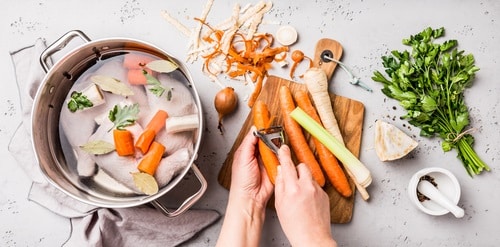
Use a large stockpot and put in 2 liters of cold water. Add your bones and vegetable scraps. If you have any, put in an extra chopped onion, carrot, garlic clove, or celery stalk. For extra yumminess, add some black peppercorns, a couple of bay leaves, and a couple of whole cloves.
Thyme, rosemary, or sage are compatible herbs with chicken. Now let time and temperature work their magic. Simmer the stock for a couple of hours with the lid on until it looks rich, golden, and has a good flavor.
Add a little salt if you like but don’t overdo it. Strain the liquid and discard the scraps. Boil the liquid to reduce it a little if you feel that it’s too watery and weak.
If you have the time and the inclination, you can roast the bones and vegetable scraps first in the oven to give them even more depth of flavor.
Toss them with a bit of oil and roast them in a hot oven until golden. Now you can add them to the stockpot. Remember to deglaze the roasting dish with a little water so that none of that flavor gets wasted.
While the stock is simmering, skim off any scum that forms on top and any fat that may float to the surface.
Store it Safely
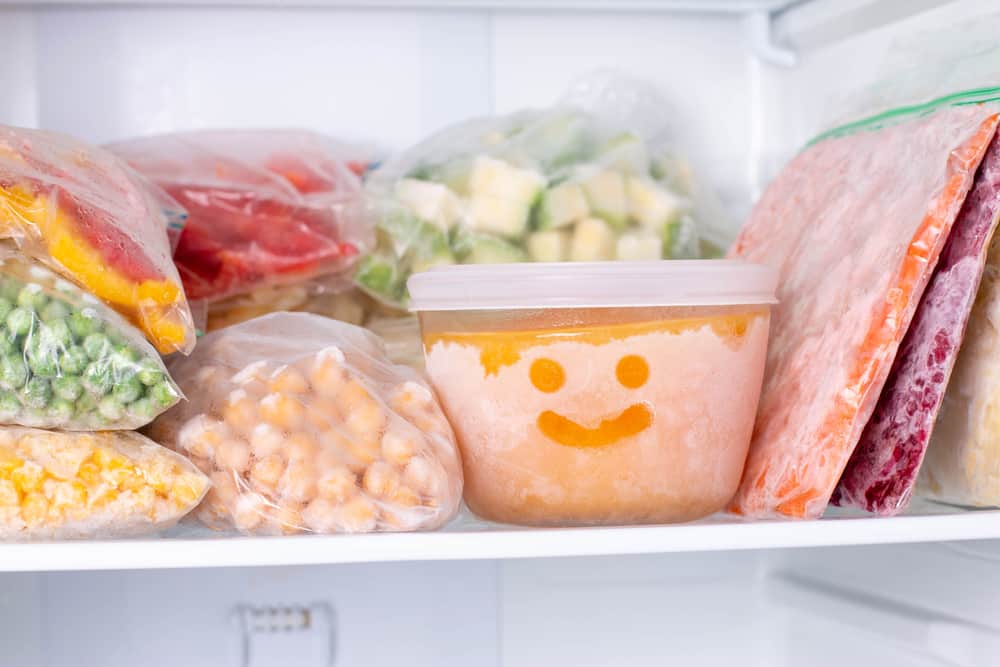
Once the stock has cooled, you need to store it. If you don’t have a pressure canner, please store it in Ziploc bags or other containers in the freezer.
You can freeze it in ice cube trays and use these little pops of flavor in gravies and sauces as you need them. However, read on if you are lucky enough to own a pressure canner.
[amazon box=”B01FXMCWYG”]
Pressure Canning
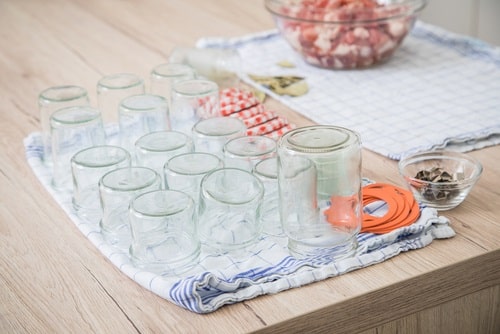
- Prepare your jars as usual by washing them in the dishwasher. Then, sterilize them in the canner.
- The stock should be warm.
- Set up the pressure canner and fill the jars with stock using a funnel and a ladle. Leave an inch of headspace.
- Put on the lids, screw on the bands, and put the jars into the canner on the trivet. There should be a gap between the jars.
- Fill the canner with water as per the manufacturer’s guidelines.
- Process the jars at 10-pounds of pressure for 25 minutes.
- Turn off the heat and allow the contents to cool naturally.
- Remove the canner’s lid and leave the jars until they stop boiling. Then, lift them out of the canner and leave them to cool for 12 hours. You should hear a popping sound when the lids seal.
- After 12 hours, make sure the lids have all been sealed before storing your delicious stock in a cool, dry, dark place.
- Remember to label the jars with the contents and the use-by date.
- Use the stock within 1 year.
Conclusion

We hope this article has helped you understand why you should never can chicken stock in a water bath. You MUST use a pressure canner.
All low acid foods must be processed this way because although botulism bacteria are killed at the temperature of boiling water, the spores can still survive. They can only be destroyed at higher temperatures. A pressure canner reaches these temperatures. Stay safe!